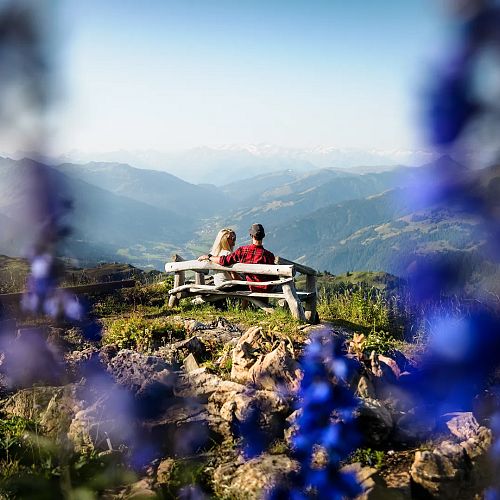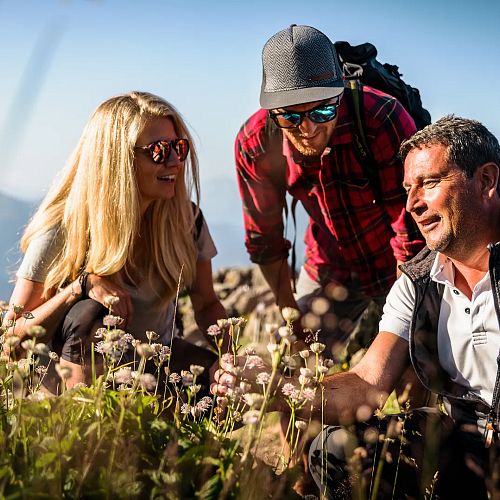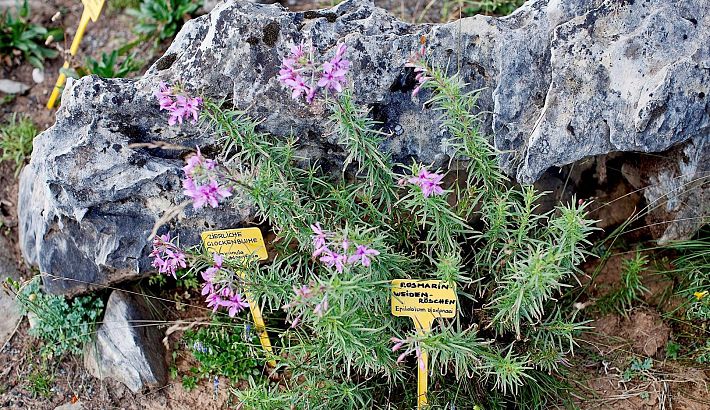The world of alpine flowers
With its vast number of different high mountain plants, the Alpine Flower Garden at the Kitzbüheler Horn is a remarkable sight. Immerse yourself in the colourful world of Alpine flowers
Due to the different flowering periods, the Alpine Flower Garden is subject to constant change with regard to forms and colour. Witness this unique flora and visit the Alpine Flower Garden at the Kitzbüheler Horn.
Accessible with




Detailed descriptions
Let's begin with the Hypochoeris uniflora, which can be easily recognised by its thickened stem just below the large flower head. It is worth mentioning that the edible shoots of this plant are beloved by piglets. This probably explains where the German name comes from, which translates to ‘piglet weed.’
The lush, large pink flowers of Dwarf Hardy Gloxinia (Incarvillea mairei) from eastern Tibet (Chinese province of Sichuan) provide little indication that this plant actually grows in the high mountains. In fact, however, it feels perfectly at home at over 4,000 m(!), thriving in large numbers amongst grazing yaks. Toni Hofer brought these plants home with him after a trip to Tibet and planted them in the Himalaya section of the Alpine Flower Garden, where they can be admired today.
If you enter the Alpine Flower Garden through the upper entrance, the first thing you will notice are the many yellow and white blossoms of the Alpine Poppy gently swaying in the wind. The natural distribution of the Alpine Poppy (Papaver sendtneri) is limited to the Northern Limestone Alps, whereas its yellow brother (Papaver rhaeticum) occurs exclusively in the Southern Limestone Alps. Due to their long taproots, which help the plants to anchor in scree, Alpine poppies are capable of growing on calcareous debris heaps. Yet it remains a mystery why orange or red-orange blossoms also appear here and there in the middle of the Alpine Flower Garden.

Remarkable sight
The meadows of the Alpine Flower Garden are beautifully spotted with yellow wolf’s bane, blue bearded bellflower and orange-red devil's paintbrush (Hieracium aurantiacum).
Also blooming are edelweiss, pink and blue Welch poppies (Meconopsis) from the Himalayas, purple alpine toadflax, yellow gentian, the impressively large woolly thistle, the animal-pollinated Carex baldensis and much more.
Circular hike
Horngipfel – Alpine Flower Garden Take the cable car to the Horn summit (2,000 m). From there, descend towards the Alpine Flower Garden, which is accessible in just 10 minutes. Once on site, enjoy a hike through the Alpine Flower Garden. A free guided tour of the Alpine Flower Garden is available by prior registration (hornbahn@kitzski.at).





